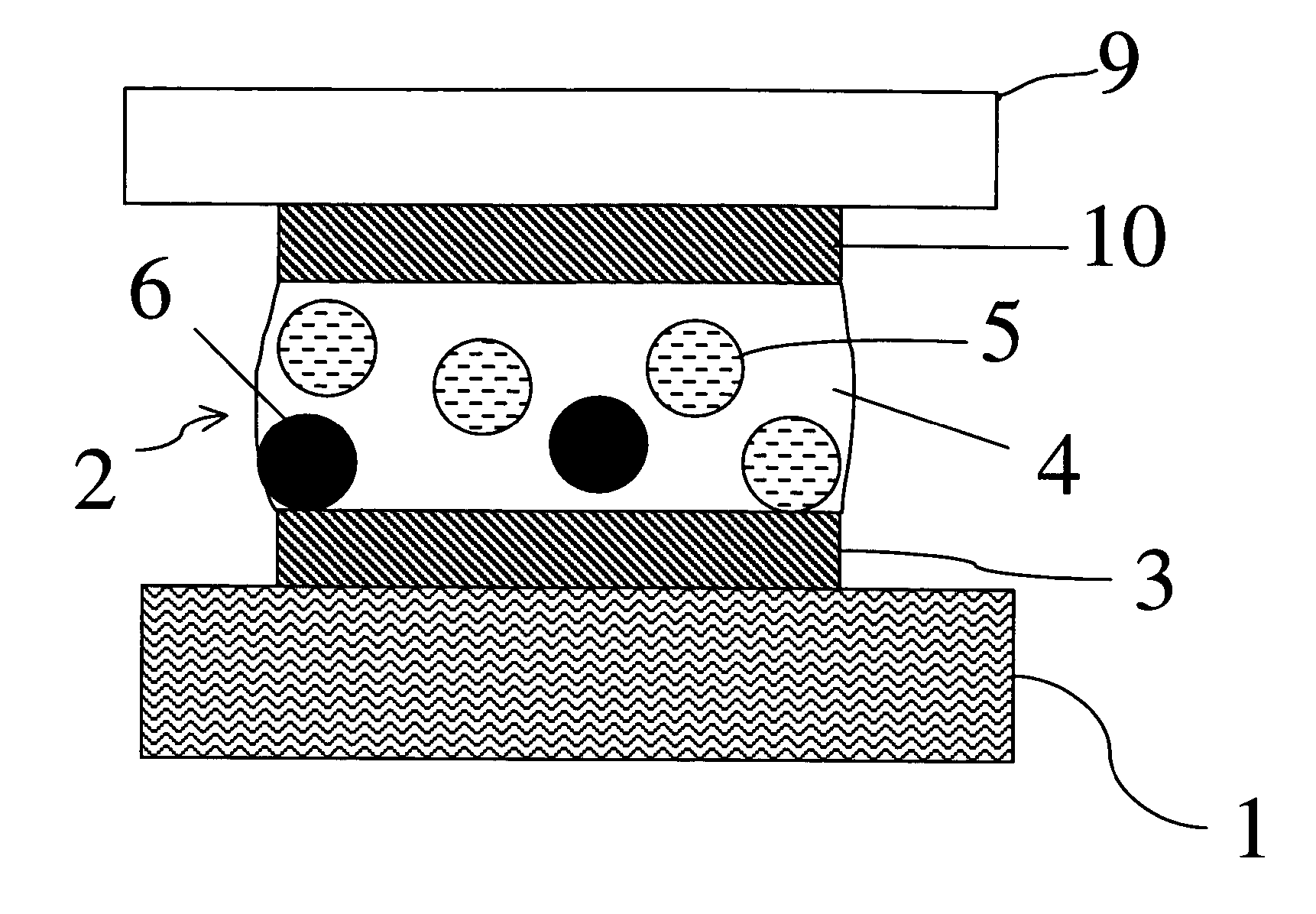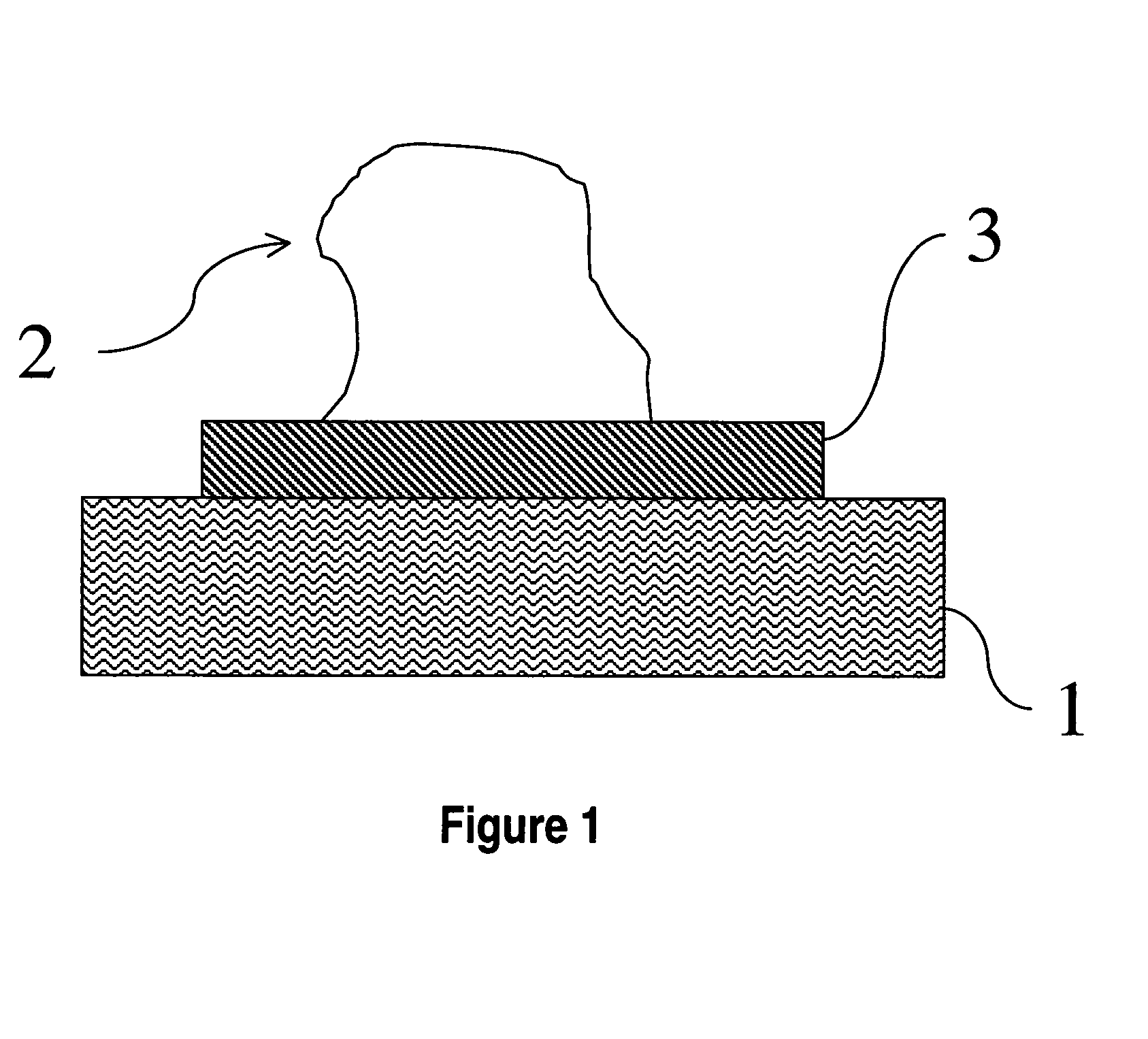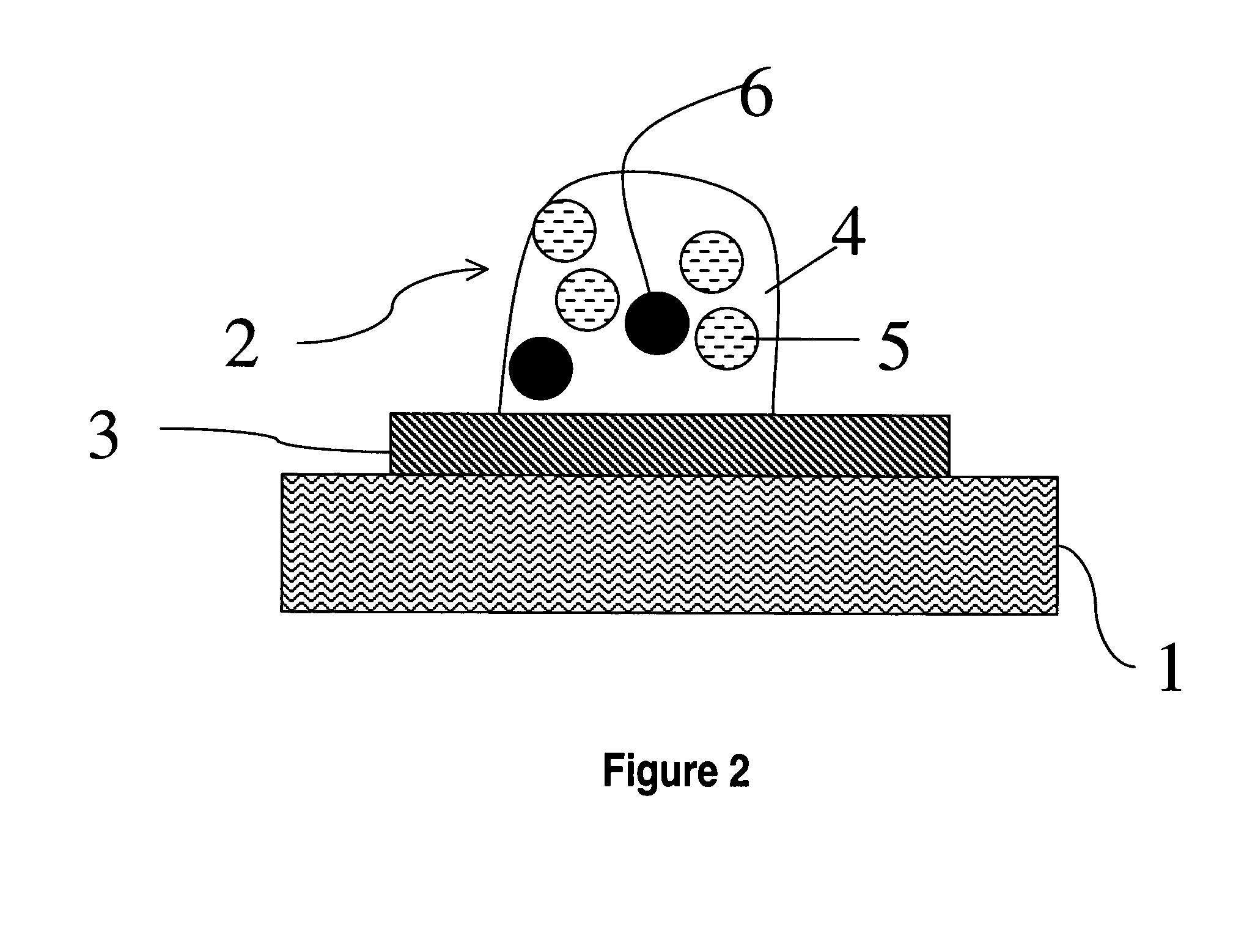Solder pastes for providing high elasticity, low rigidity solder joints
a technology of low rigidity and solder joints, applied in the direction of welding/cutting media/materials, solventing apparatus, manufacturing tools, etc., can solve the problems of new problem set, device and system failure, and the stress resulting from these mismatches do not disappear, and achieve low rigidity solder joints, high likelihood of mechanical deformation, and high elasticity
- Summary
- Abstract
- Description
- Claims
- Application Information
AI Technical Summary
Benefits of technology
Problems solved by technology
Method used
Image
Examples
example 1
[0055]A joint between a ceramic coupon and an FR4 coupon may be made with a solder paste using 5.00 g of solder powder, 2.50 g of copper powder, and 2.13 g of flux. A cross section of the joint shows that there is approximately 2% porosity. The joint may be tested using an MTS lap shear tester. The load capacity of the joint is approximately 484 lbf / in2. The joint may be stretched approximately 9.3 mils. The joint is less porous than the joint shown in FIGS. 1–4.
example 2
[0056]A joint between a ceramic coupon and an FR4 coupon may be made with a solder paste using 5.00 g of solder powder, 5.00 g of copper powder, and 3.38 g of flux. A cross section of the joint shows that there is approximately 50% porosity. The joint may be tested using an MTS lap shear tester. The load capacity of the joint is approximately 325 lbf / in2. The joint may be stretched approximately 7.5 mils. The joint is similar in porosity to the joint shown in FIGS. 1–4.
PUM
| Property | Measurement | Unit |
|---|---|---|
| porosity | aaaaa | aaaaa |
| porosity | aaaaa | aaaaa |
| melting temperature | aaaaa | aaaaa |
Abstract
Description
Claims
Application Information
 Login to View More
Login to View More - R&D
- Intellectual Property
- Life Sciences
- Materials
- Tech Scout
- Unparalleled Data Quality
- Higher Quality Content
- 60% Fewer Hallucinations
Browse by: Latest US Patents, China's latest patents, Technical Efficacy Thesaurus, Application Domain, Technology Topic, Popular Technical Reports.
© 2025 PatSnap. All rights reserved.Legal|Privacy policy|Modern Slavery Act Transparency Statement|Sitemap|About US| Contact US: help@patsnap.com



